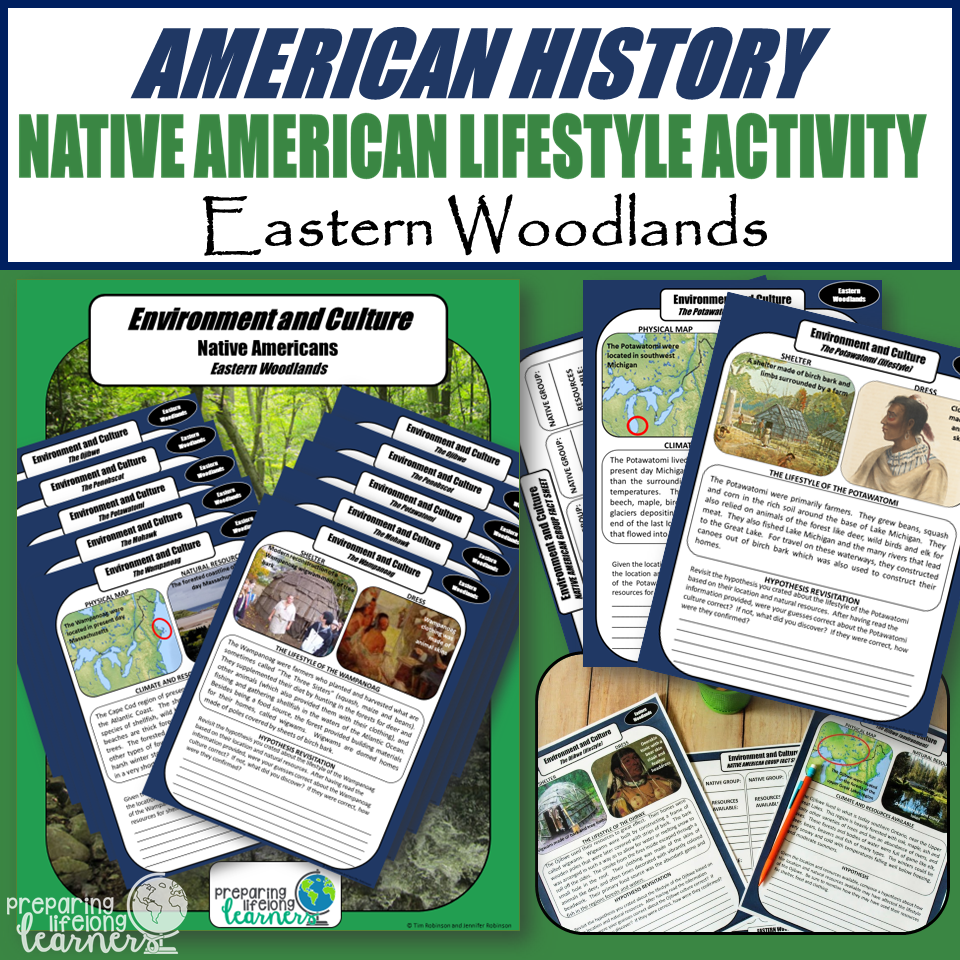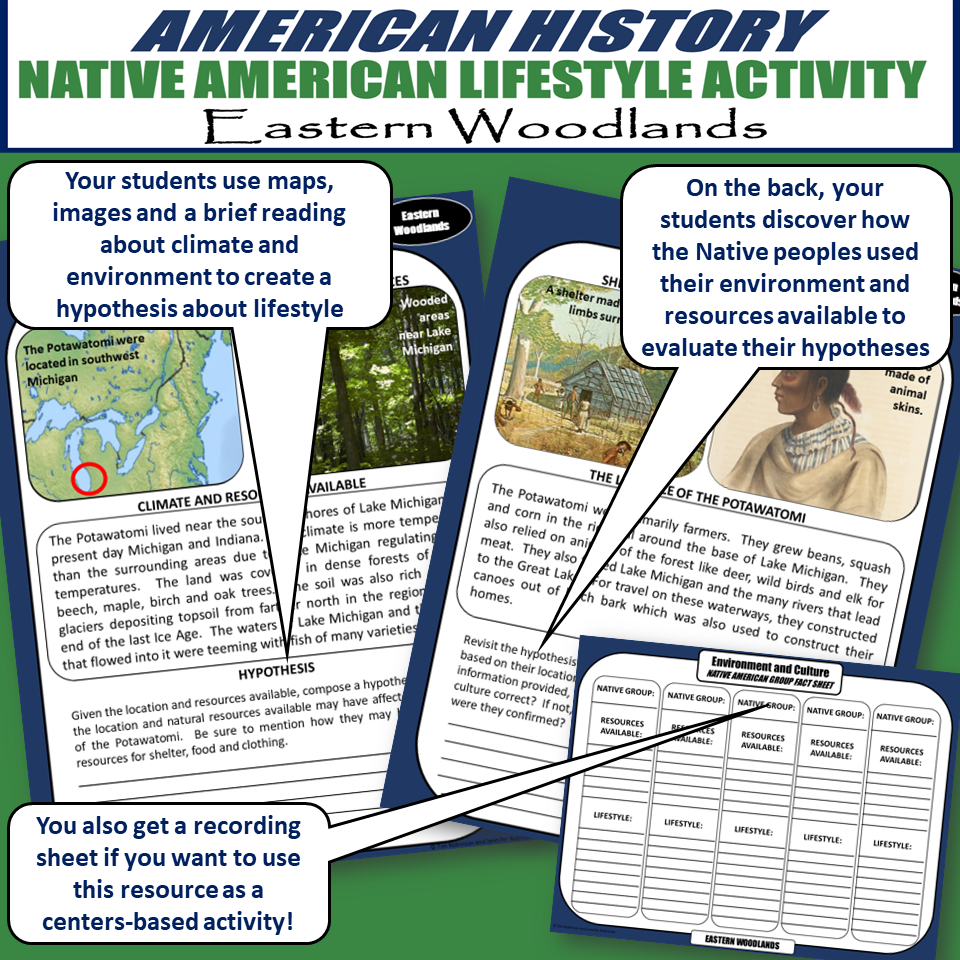Generate and Evaluate a Hypothesis while learning about Eastern Woodland Native Americans!10/13/2019 Last fall, I was lucky enough to attend the National Council of Social Studies in Chicago. It was an amazing few days filled with interesting and mind-opening presentations about just about anything you could think of related to social studies. Some sessions were better than others, but the one that really stuck with me was about how we teach about Native Americans. Actually, it was about how we don't. Nationwide, there are very few state or national standards tied to Native Americans, and, as a result, there are very few resources available. This inspired me to create some. Several years ago, I had written five sets of readers' theater plays (Eastern Woodlands, Pacific Northwest, Great Plains, Southeast, and Southwest) that my wife and I sell through her store which is geared more to elementary teachers although I also used them with my 8th graders. But, the resource I was inspired to create at the conference was my Eastern Woodlands Activity. This resource presents your students with information about the environment and resources available for five different Eastern Woodland tribes (the Potawatomi, Ojibwe, Penobscot, Mohawk, and Wampanoag), and asks your students to generate a hypothesis on how they used those resources to live. Once they have generated their hypotheses, they flip the page over to discover how the environment and resources were actually used, and are asked to revisit and evaluate their initial hypotheses. This is a great resource for individual research, group projects, or centers! So, click the link below for my Eastern Woodlands Activity, and if you are interested in those Native American readers' theater plays, visit my wife's store. For more great American History resources, be sure to visit and follow my store!
0 Comments
Leave a Reply. |
MEET TIMI'm an 18 year veteran teacher that loves teaching, coaching, writing, and my family.
Archives
May 2022
|




